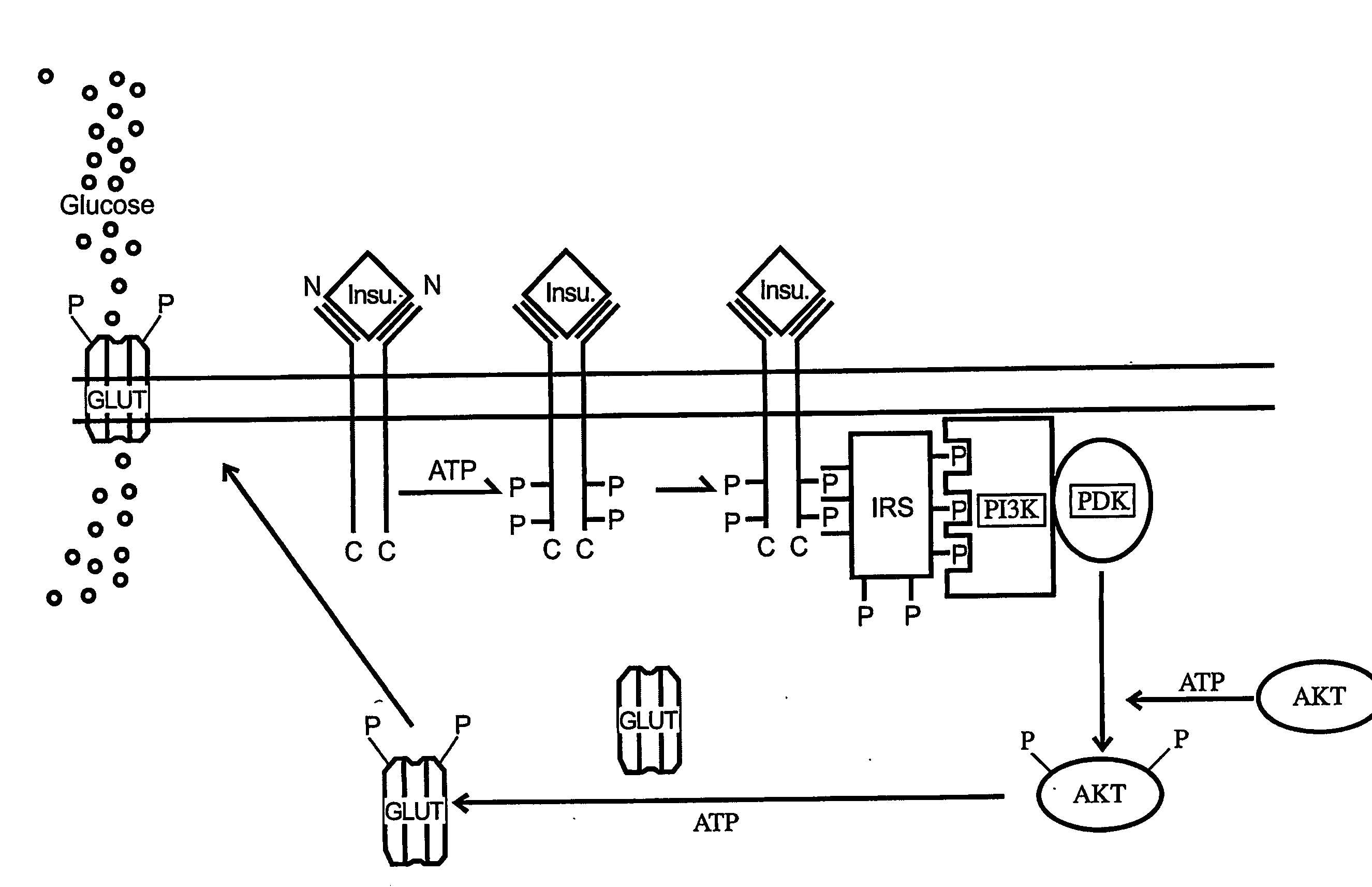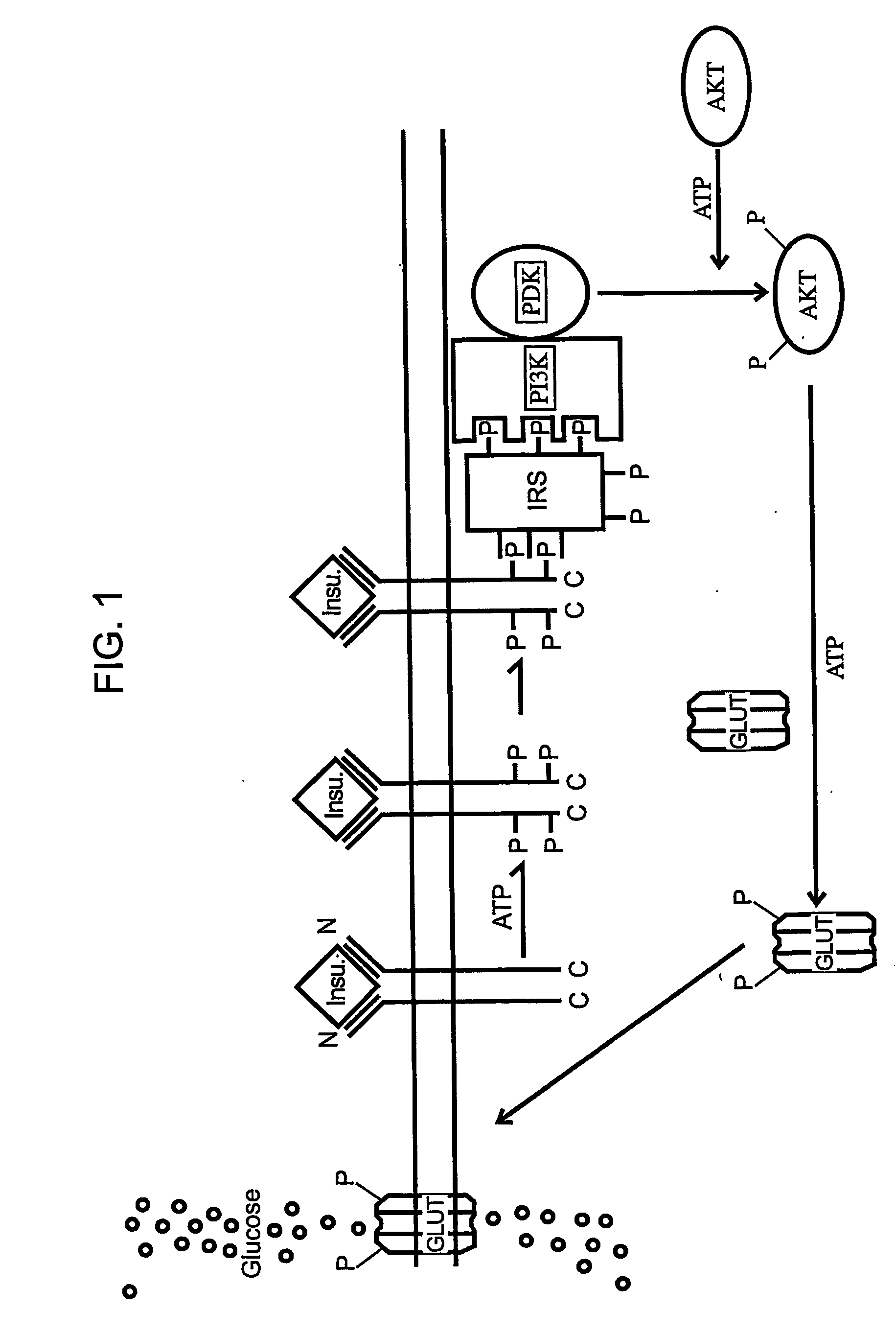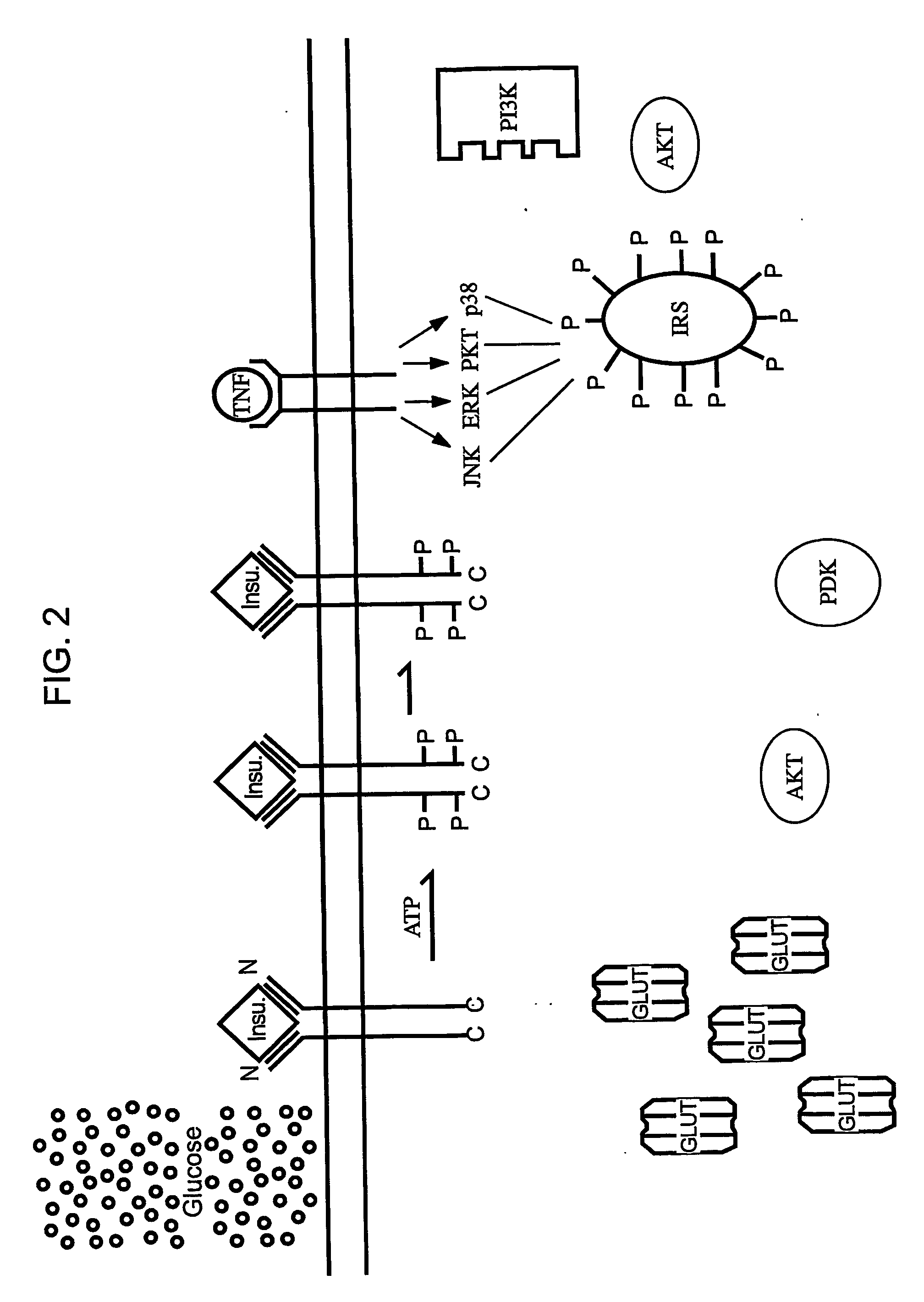Methods of Treating Tnf-Mediated Disorders
a technology of tnf-mediated disorders and treatment methods, applied in the field of treatment of tnf-mediated disorders, can solve the problems of lacking effective rational therapies, and achieve the effect of reducing tnf- synthesis and reducing tnf- binding
- Summary
- Abstract
- Description
- Claims
- Application Information
AI Technical Summary
Benefits of technology
Problems solved by technology
Method used
Image
Examples
example 1
ne in the Treatment of NASH
[0172]Nonalcoholic Steatohepatitis (NASH) is described as the presence of large droplet steatosis accompanied by evidence of hepatocellular necrosis and fibrosis. Several studies confirmed that NASH can progress to hepatic insufficiency, cirrhosis and hepatocellular carcinoma. Over the last decade, there is increasing evidence that insulin resistance may play an important role in the pathogenesis of NASH. Individuals at the greatest risk for developing NASH have conditions related to diabetes and obesity. Tumor Necrosis Factor-α (TNF-α) is the first identified fat-derived peptide, and accumulating evidences suggests that fat-derived TNF-α is directly involved in the development of insulin resistance in obesity and NASH. It has been postulated that TNF-α-mediated serine-threonine phosphorylation of Insulin Receptor Substrates (IRS) contributes significantly to TNF-induced diabetes. FIG. 1 depicts insulin signaling in the absence of TNF. FIG. 2 depicts insul...
example 2
Pirfenidone on the JNK (c-jun) Kinase Pathway
[0175]FIG. 5 depicts various downstream signaling events that are triggered by TNF binding to a TNF receptor. TNF-mediated activation of various serine-threonine kinases are differentially affected by pirfenidone. Therefore, activation of transcription factors downstream of a given kinase will be differentially affected by pirfenidone. FIG. 6 depicts pirfenidone inhibition of TNF-induced ERK activation. FIG. 7 depicts pirfenidone inhibition of TNF-induced p38 MAPK activation. FIG. 8 depicts pirfenidone inhibition of TNF-induced activation of the transcription factor CREB. FIG. 9 depicts pirfenidone inhibition of TNF-induced activation of RAF kinase. FIG. 10 depicts pirfenidone inhibition of TNF-induced activation of AKT. FIG. 11 depicts pirfenidone potentiation of TNF-induced JNK activation.
[0176]While phosphorylation of CREB is diminished due to decreased activity of p38 in the presence of pirfenidone, phosphorylation of the JNK-phosphor...
PUM
| Property | Measurement | Unit |
|---|---|---|
| molecular weight | aaaaa | aaaaa |
| prothrombin time | aaaaa | aaaaa |
| time | aaaaa | aaaaa |
Abstract
Description
Claims
Application Information
 Login to View More
Login to View More - R&D
- Intellectual Property
- Life Sciences
- Materials
- Tech Scout
- Unparalleled Data Quality
- Higher Quality Content
- 60% Fewer Hallucinations
Browse by: Latest US Patents, China's latest patents, Technical Efficacy Thesaurus, Application Domain, Technology Topic, Popular Technical Reports.
© 2025 PatSnap. All rights reserved.Legal|Privacy policy|Modern Slavery Act Transparency Statement|Sitemap|About US| Contact US: help@patsnap.com



